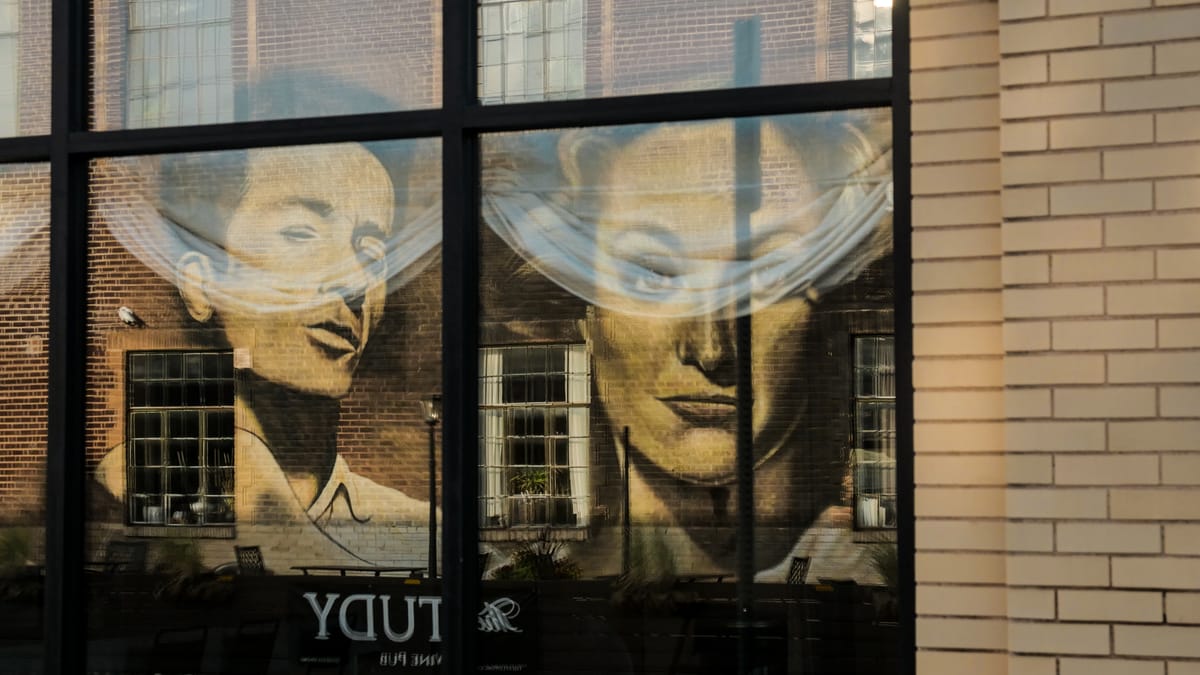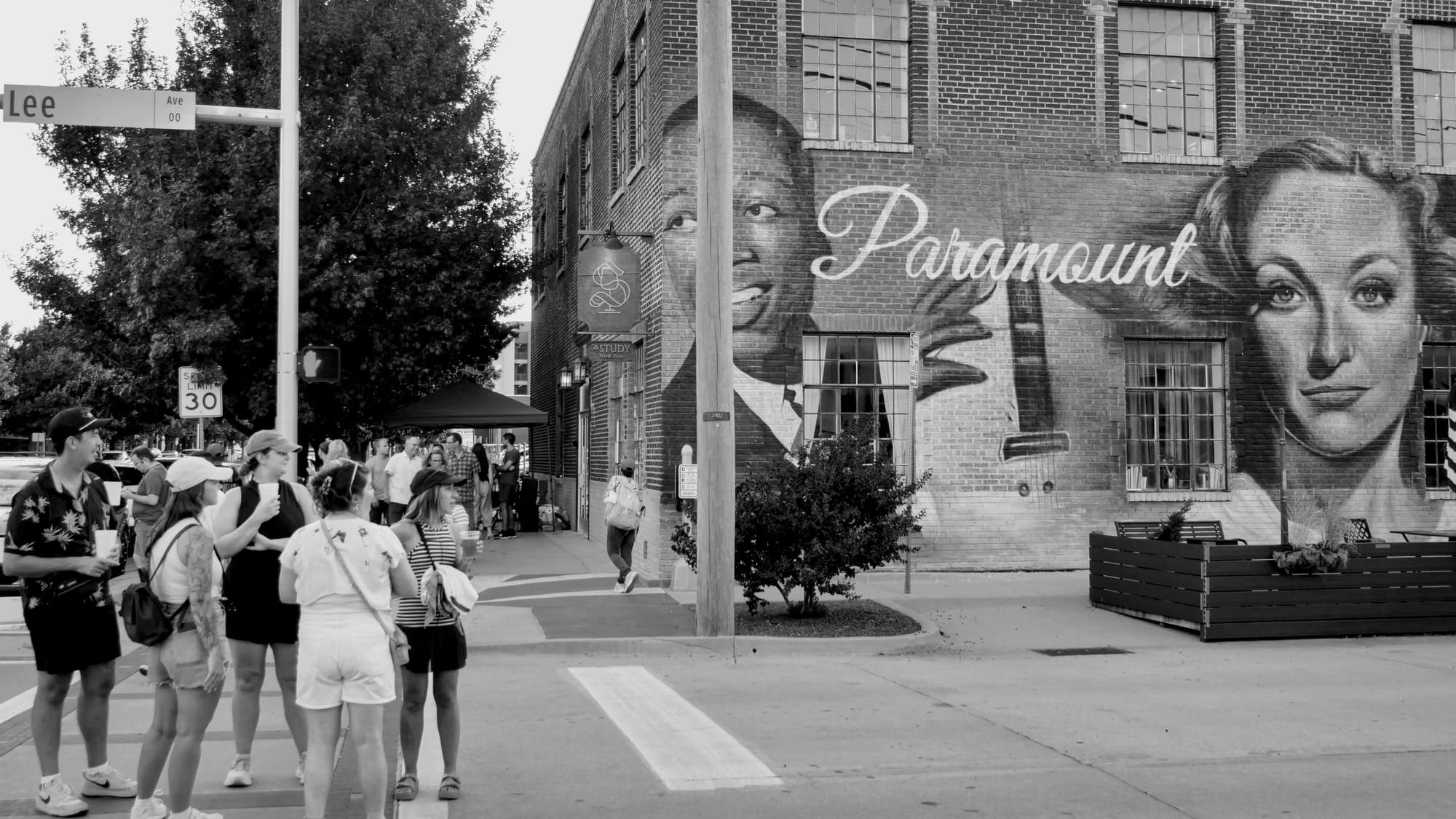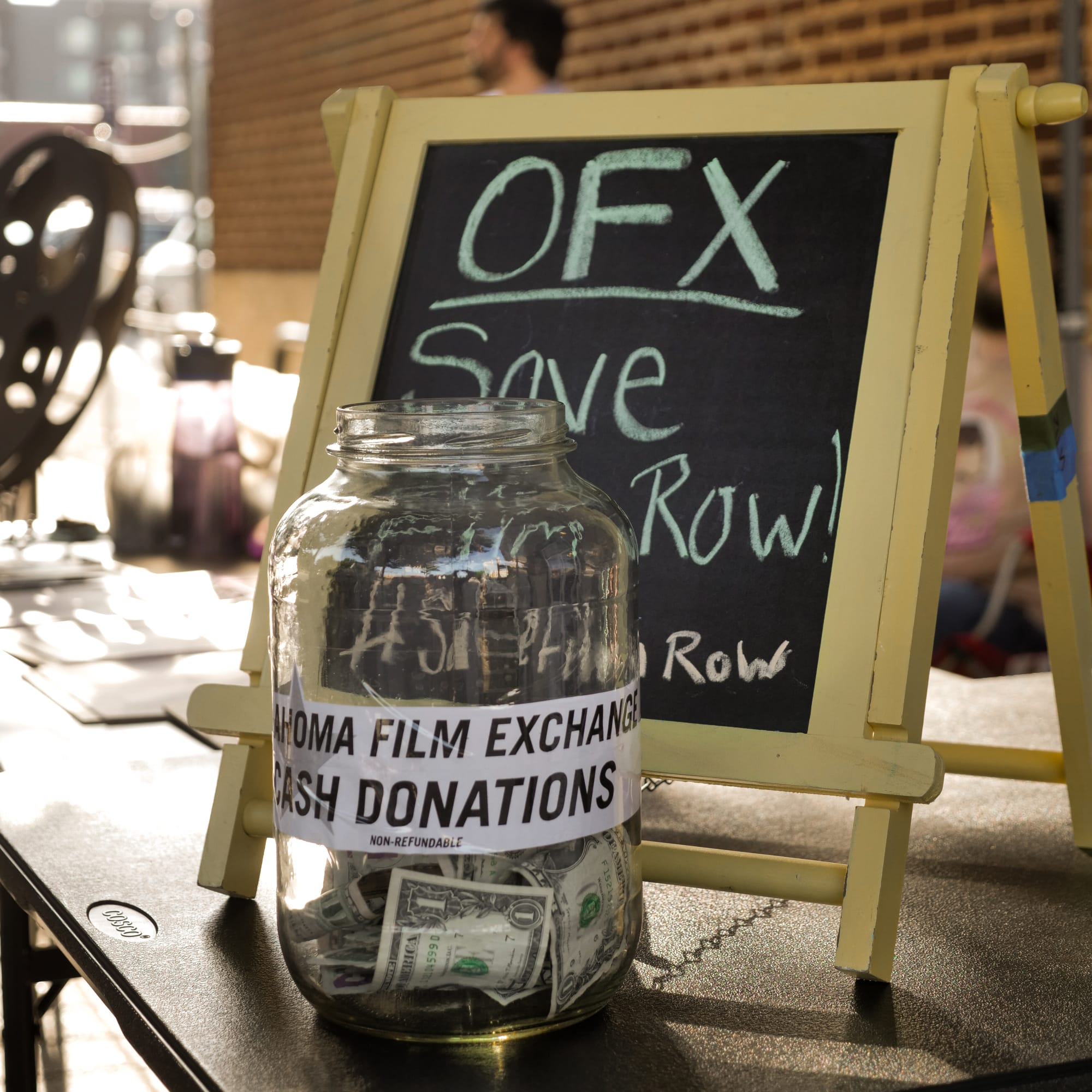
This August, the Oklahoma Film Exchange (OFX) had one mission: raise $100,000 in 30 days to preserve the last historic film exchange screening room in the country, located at 701 W. Sheridan Ave. in Oklahoma City.
Throughout the month of August, the OFX team gave it their all in a programming blitz, with a movie or event (sometimes two) each day in the Film Row screening room. But the fundraiser stalled, and the nearly $15,000 they raised on the popular crowdfunding platform IndieGoGo was returned to donors.
However, that wasn’t the end for OFX’s effort to preserve this historic screening room. In fact, that’s just where the story starts.
Setting the Stage
While Oklahoma City had played host to live entertainment since statehood, it wasn’t long before motion pictures started moving into the Sooner State. Shortly after the advent of widespread distribution and access to motion pictures, businessmen across the country began opening nickelodeons, theaters that screened films and actualities (early unstructured documentaries) for a 5-cent admission price.
Enter the film exchange.
“The first couple of decades of film history, they built these film exchanges across the country,” says Dalton Stuart, lead operations partner for OFX. “They were basically warehouses and holding centers for all the reels coming in as the film showed up from New York, Chicago and L.A. Theater owners, critics, industry types would come to the screening rooms in film exchanges to watch the stuff that was on offer, and decide what they wanted to show in their movie theaters.”
These exchanges were primarily located in cities near railheads, facilitating easy transportation across the country—making Oklahoma City a prime locale. Oklahoma City was one of 37 film exchange networks across the country, and by 1928, there were 30 film exchanges in OKC, according to historian Bradley Wynn in his book Oklahoma City: Film Row (Images of America), which explores the history of the Film Row district.
Due to the explosive and flammable nature of film stock of this era, many film exchanges throughout Oklahoma City were quickly reduced to cinders—largely because of a lack of standardized fire codes and fireproof vaults for the nitrate-based stock, according to Wynn. From the mid-1920s to the 1930s, consolidated film exchanges using the new fire codes sprang up on what was eventually called Film Row; an area situated on the outskirts of Oklahoma City’s original downtown to protect the timber-framed city core from the risk of explosive conflagration.
Eventually, the studios became the power players of the film exchange game, consolidating the shipping, rental and distribution of their films to the theaters that would screen them. The Paramount Building at 701 W. Sheridan, part of the “Film Exchange Historic District” on the National Register of Historic Places, is the site of one of the aforementioned studio-run exchanges, and hosted one of four screening theaters.
As time passed, the district, which had been a hub of movie-industry commerce for almost every major studio in the game, became derelict. Most longtime Oklahoma City residents recall the boarded-up storefronts, broken glass and empty lots that followed failed downtown urban renewal efforts in the 1960s and ’70s.
The Film Row screening room itself went from an industry-exclusive theater managed by Paramount to a general audience theater screening everything from blockbusters to adult films until the 1980s. But eventually, the projector light grew dim, and this space also fell vacant.
It took a passionate group of Oklahomans to revitalize Film Row in the mid-2000s, laying the foundation for what it is today. And now, in 2025, the Oklahoma Film Exchange—the name a loving homage to the heyday of the industry—is on a mission to prevent this last screening room from vanishing from existence.

Back to the Future
While the OFX team heard rumblings in early 2025 about the fate of the Film Row screening room, they didn’t have a firm grasp on what was going to happen to it until this past June. At the time, non-profit arthouse theater Rodeo Cinema had been leasing and operating the screening room, but there didn’t seem to be much momentum in the space.
“I wouldn’t say they shut down the Film Row location, but they definitely weren't scheduling any events there or anything like that until deadCENTER,” says River Lundsford, OFX communications and marketing team member, who explained that it was Sean Peel, a member of the OFX team, who first learned of the news of the screening room’s imminent closure at the end of summer.
By this point, the OFX had become a loose collective of film programmers and cinephiles with the goal of someday securing a permanent screening location, similar to what the microcinema Hyperreal Film Club had achieved in Austin, Texas. However, after learning that the Film Row screening room would be no more by the end of August 2025, the group had to take action.
“That was kind of a rallying cry for us through all of this,” says Stuart. “It took [Hyperreal Film Club] five years, but they have a building now. And they started with nothing. We’re starting with a building. We only have it for a month, but we’ve got it.”
The ragtag group of cinephiles, comedians and artists knew it was a tall order, but to keep the Film Row screening room alive as an operational theater, they collectively believed an all-or-nothing fundraising blitz was worth it. They estimated $100k would cover taking over the lease from Rodeo, as well as all operational expenses for a year.
Kicking off their IndieGoGo at the end of July, the team started putting in work. Every night for a month, there was some kind of screening, event or community gathering. There was no admission fee, with donations accepted at the door, and the opportunity to buy merch and snacks. While the IndieGoGo chugged along in the background, all the donations at the door went straight to the OFX operations account.
“We thought that we were going to have maybe $3K lying around when we were done,” says Stuart. “That would be enough to license a movie once or twice a month, and figure out some pop-up screenings at Bookish and Mycelium Gallery.”
Three weeks into the fundraiser, though, OFX had only reached around 15% of its $100k IndieGoGo goal. Due to the all-or-nothing structure of the fundraiser, those donations would be refunded to their original donors at the month’s close, so the team couldn’t count on any of that money.
But, despite this, they had great news.
“We were shocked at how much money we had raised just on screenings. It all started to set in that like, ‘Oh, no—this is, this is happening. We could, we can do this,’” recalls Stuart.
After crunching the numbers, the OFX team realized they had raised enough money from donations at the door alone to cover a month-to-month lease until the end of the year.
“I just remain blown away,” says Stuart. “And if I dwell on it for too long, I get pretty emotional about it.”

Keeping Film on Film Row
Now that the OFX has preserved the screening room to live another day, they’re looking at more sustainable efforts to keep the lights on. Their newly formed worker-owned co-op has received the green light from the Oklahoma Visual Arts Coalition on a partnership with the organization to assist with fundraising; more details to come. Besides operational costs, the team is looking to raise an additional $15,000 to upgrade projection equipment, as well as to secure funds to continue leasing some equipment from Rodeo Cinema.
“We have some good potential fundraising partners coming in for us, hopefully, here soon,” says Keithan Smith, OFX programmer and operations team member. “We’re all feeling pretty good that between all of us, we can come up with some programming that the OKC community will find interesting and entertaining.”
Indeed, the team programmed 21 events in September. Highlights included some classics like Charade (1963) and His Girl Friday (1940), some nostalgic flicks like Ernest Goes to Camp (1987) and The Mask (1994) and a special screening of the first two episodes of Sterlin Harjo’s new FX show “The Lowdown,” starring Ethan Hawke and Keith David, which was shot in Tulsa. October is jam-packed with spookier picks, some horror classics and some off-the-beaten-path options, with a full calendar of events available online.
Now that the team is in the space and making it their own, they’re going to give it their all to prevent it from going the way of historic Oklahoma City theaters like the Orpheum and the original Criterion.
“Oklahoma has a tendency to always look forward and never back, and never really interacts with the rich history it does have. And the film exchanges and Film Row is one of the few things we have left in the city for any historical period of time,” says Lunsford.
“I don’t know if I would say we have a responsibility to care for buildings, necessarily, so much as our history. But I do think as film lovers and as people who want to create spaces for the arts, we do have a responsibility to utilize that space and to keep its legacy going. Because if we don’t, who will?”
Keep up with October screenings and events at the Oklahoma Film Exchange by following the group on Instagram@oklahomafilmexchange or visiting oklahomafilmexchange.com.

